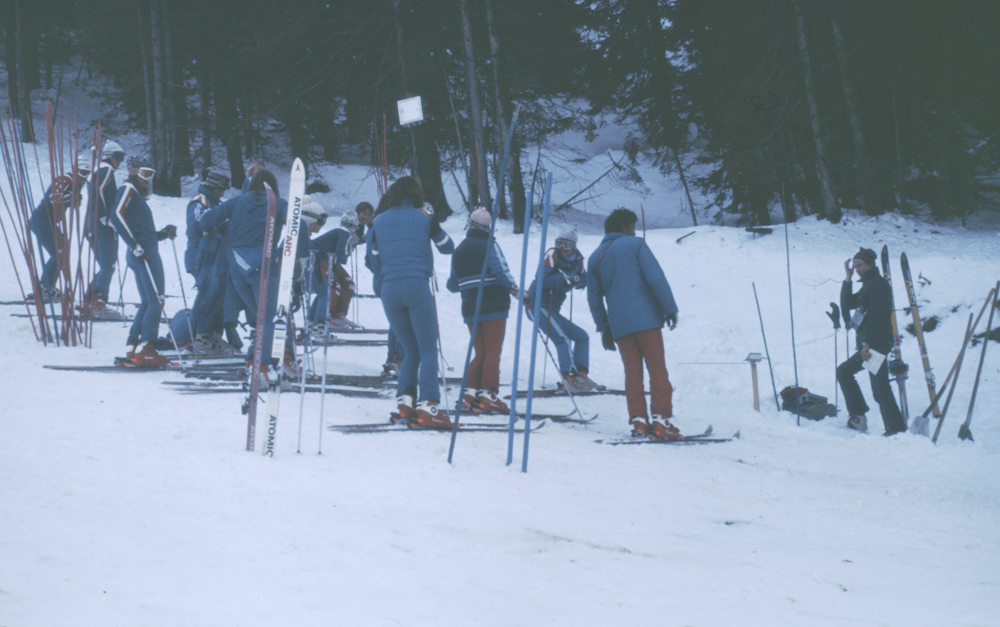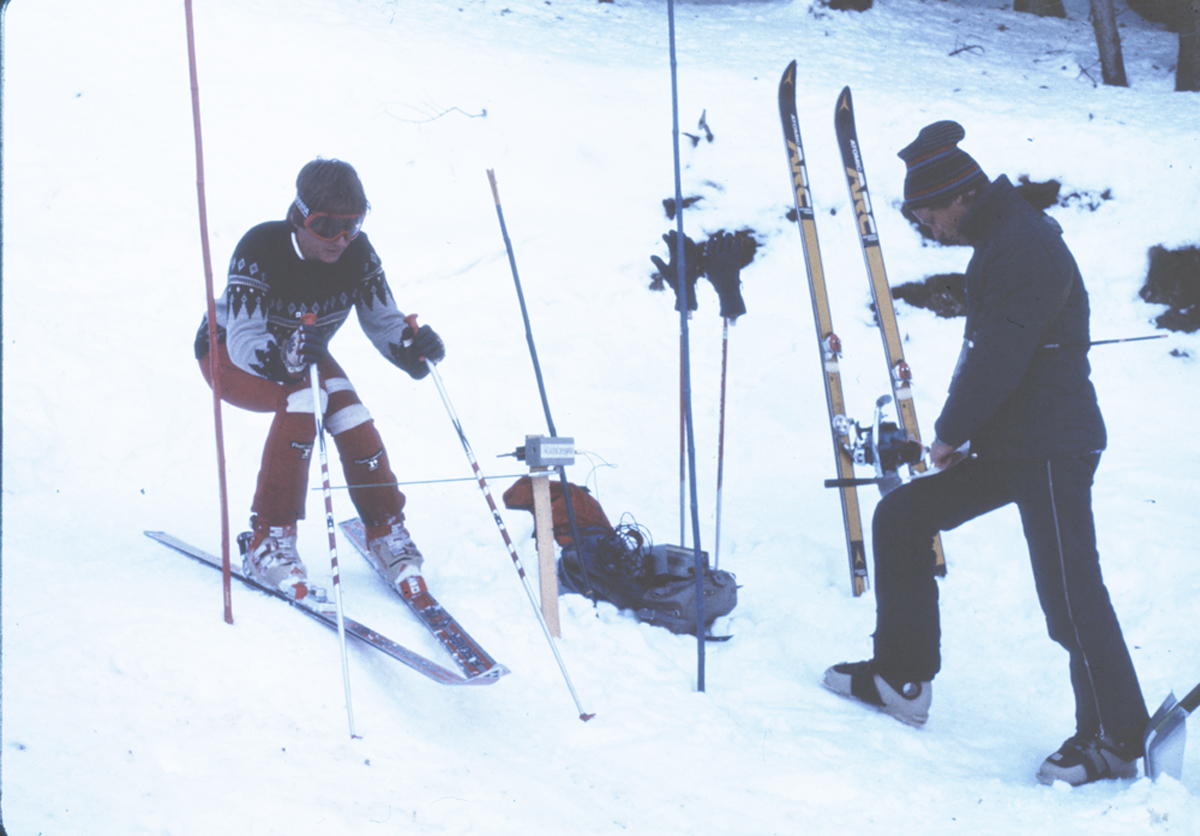|
|
In February 1982, the Alpine World Ski Championships were held in Schladming. There was a unique opportunity to perform
SRCT tests under very special conditions - directly in a downhill training run at which all media were present. Kurt Hoch
(the ladies coach), and the former head of the
ski company ATOMIC,
Alois Rohrmoser,
supported the project. The two Austrians ski racers
Ingrid Eberle
and
Elisabeth Kirchler made themselves available for the tests. The day before the test run I mounted my
Sensor Timer
on their skies (see photo r. h.), which was admired by many people.
At 9:00am, immediately before the test runs, I was invited by the Austrian Broadcasting Corporation (ORF) for the
well-known TV-broadcast "Sports on Monday". However, the meeting would have taken place at 11:30, and I therefore had
to decline the invitation. They were very annoyed at my decision, but the success of my project was more important
to me. Furthermore, I was anxious that my employer may hear about the project (for which I had taken vacation
time to work on). Additionally, I struggled with stomach problems and chronic back pain.
To get to the blocked slope, the Austrian Ski Federation gave me a plaque that allowed service individuals access.
I went up with a ski-lift, set the transponder rod for the stop pulse at the start line on top of the mountain
(elevation of almost 2,000 metres), and the second transponder rod for the stop pulse slightly above the official
Longines timekeeping equipment near the finish line at an elevation of about 750 metres. The distance to the
sensor timer when passing, was more than 10 metres. I was curious about the results of the test, which had
previously never been observed in downhill ski racing.
The ladies started. Result: One timer worked properly and displayed the real run time; the second had not triggered. Conclusion: I realized that the indirect triggering (IR-beam reflected by the snow), as it was in use in devices that were attached on the ski-shovel), only functioned in slalom, RS-slalom and material testing. For downhill training, at high speeds above 100 km/h, we needed direct "view" between the sensor and transponder, and higher IR energy.
Some people from the media were enthusiastic and reported about the test
u. a.
the Austrian "Kurier".Retrospectively, in my eyes it is a shame, that I was compelled to hide my identity in those days..
Each monthly salary, which I was paid for my employment as a designer in the railway machines company, was spent for research and development on the SRCT-system. It was the ONLY source of money. I knew that a possible loss of my job was tantamount to total failure at this project. So I tried to continue with all the powers and abilities to develop improved devices, until achieving series production and launch on the market. . One year later, it succeeded.
There are some photos of the test --> see here:
foto
1
foto 2
foto 3
foto 5
foto 6
foto 7






|